For over 25 years, Double Fine Productions has been one of the video game industry’s most consistently creative developers. From the mind-bending platforming antics of the Psychonauts series to the heavy metal love letter that is Brütal Legend, the San Francisco-based studio is behind some truly inventive gaming experiences. And now, the team is about to release what might just be its most unique game to date.
Enter Keeper, a puzzle adventure game in which you play as none other than a lighthouse. Experienced entirely without dialogue, the game follows the sentient structure as it explores a surrealist world with the help of a bird named Twig. MobileSyrup sat down with Lee Petty, creative director of Keeper and veteran Double Fine art director, to learn more about the game. In our wide-ranging chat, he talks about the inspirations behind the game, avoiding common gaming conventions by crafting a dialogue- and combat-free experience, his approach to puzzle design and more.
Where did the idea for this come from? Because it’s such a unique concept.
Lee Petty: It’s always somewhat challenging to pin down where the exact origin is of an idea. But I think for me, this one actually has a pretty obvious point, which was during the pandemic. We were kind of all quarantined off and isolated and one of the things I’m a big fan of in general is nature walks and hiking and backpacking. And I often do a lot of thinking there. And during the pandemic that became even more important because it was one of the few things we could actually do. And I found my mind wandering around nature and sort of started asking a lot of the questions maybe a lot of other people were thinking about. ‘Is this it for us? Is all that’s gonna be left the sort of nature around me? And if so, how would it evolve? Far-flung future, what would it become and would it still be motivated by the need to connect with one another?’
And I had seen a documentary around that time called Fantastic Fungi, and one of the things they talked about is the mycelial networks that fungus have that connects them across, in some cases, wide distances and how other things like trees can sometimes piggyback on those networks to share nutrients. And somewhere in that sort of space, I just started imagining an island sometime long after humans are gone and all sorts of weird, surreal life that would grow there. ‘What would be left if humanity?’ I just pictured there’s this lighthouse left, and ‘What is its purpose, because the humans are gone? There’s no ships to guide anymore.’ That was the starting point, I think, more than anything else.
And when you have that idea, how do you go from there? In terms of you wanting to have a lighthouse as the main character, how do you decide the gameplay from that? How does a lighthouse even control? What kinds of gameplay opportunities come with that? That sort of thing.
Petty: Yeah, oftentimes, the sort of thematic and visual and gameplay ideas all kind of hit me right around the same time, and I think this was pretty much the case, too. I just had a sense that I wanted everything in the world to feel alive.
Then I started thinking about surrealist painters, which I’m a big fan of. And one of the techniques they use is there’s a lot of found objects in their work and sometimes, they have different properties. Like, you’re expecting a rigid thing seeming soft. And somewhere in there, I just started thinking about leftovers and lighthouses and I was like, ‘Oh, a lighthouse is great because its purpose is guiding and it’s got this light that can guide.’ And it was like, ‘Well, wouldn’t that be cool as a basis for gameplay?’ Like, using your light as a way to explore and interact with the world, as well as tackle puzzles that way.
But of course, it’s one thing to be a lighthouse with a light. Then there’s a big thing of, ‘How did this start to walk around?’ I honestly don’t know exactly where that came from. It just occurred to me that a big part of this game is about metamorphosis or change and its relationship to meaning. And I thought, ‘Well, this lighthouse can learn to walk and set out on its quest.’ And the light was a big part of that.
And I think the other big component of the gameplay I mentioned early was this idea that the lighthouse is lonely. It’s this leftover artifact, and it would have to make friends. And I started talking to the team and we thought of a lot of different companions. But one of the ones that really initially attracted me was the idea of a bird that could ride along on the lighthouse and they could do things that the lighthouse couldn’t. They’re kind of the perfect companions in some ways because the lighthouse is heavy and somewhat slow, but it’s got this light, this ethereal beam, that can do things like grow foliage or activate leftover things. But the bird is a bit more mobile and has hands, effectively — the claws. It can grab and manipulate things. And imagining how those abilities would work together to explore this world formed the basis of most of our puzzles and interactions.
This game comes from Double Fine, which is a studio known for, among other things, very sharply written games. And what I think is really interesting here is Keeper doesn’t have any dialogue. So I’m curious, how did you decide to tell the story in this particular way and how did that lead you to take on maybe different or more unconventional means of storytelling?
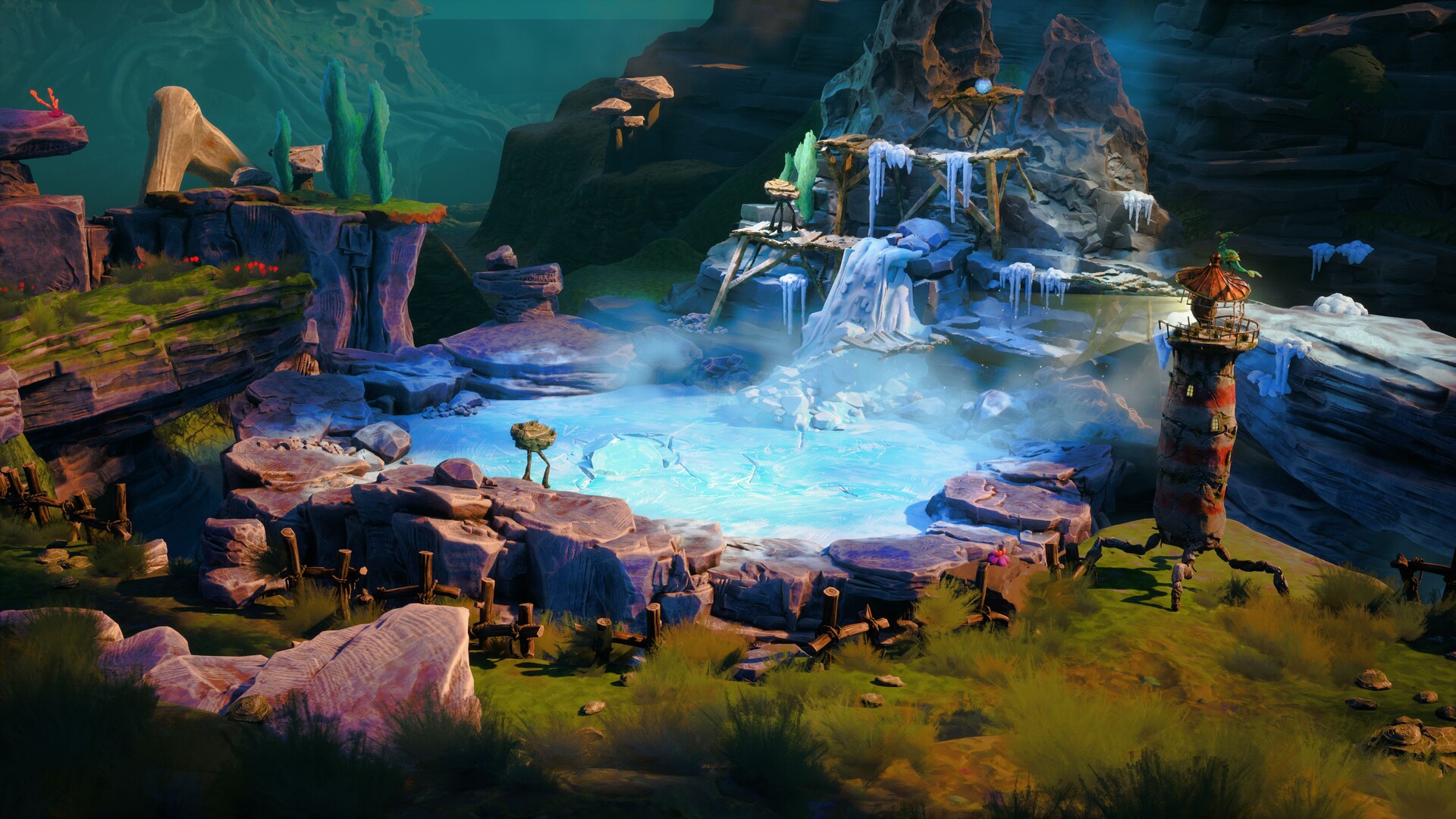
Petty: Yeah, it’s true. I’ve led other games at Double Fine and been involved with the writing and it’s something I enjoy a lot. But it felt like we had an opportunity to create something that just had a different vibe to it. I thought that removing words — as humans, they just tell you where to go, what to think. Obviously, there’s nuance to it as well, but I just wanted to have that gone, because it just reminded me of the sort of silence of the pandemic in some way. And the lighthouse can’t talk, so it’s kind of perfect. The birds don’t really speak the English language or anything else either. So it led that way there.
But I realized early on, one of the things I wanted… We call it a ‘weird but chill’ game, which is to say that it’s weird in that it has a lot of unexpected things in it. So it’s not quite relaxing in the same sense as a cozy game is. But it’s chill in the sense that it was really important for us to create negative space in the game where you’re not just a content shark and going from mission objective to mission objective and checking off chores — that you could spend some time inhabiting this world. You’re not being told that you have to do anything and [so you’re] taking it at your own pace.
That is something we for sure leaned into more when we decided it wasn’t going to have dialogue or words associated with it. And removing some things, it elevates other things. And so for us, that was elevating the visuals, the world-building, the music. And the sound effects play a huge role in this game. That emphasis worked better without words for us. And similarly, it led to a lot of our control and camera paradigms, too, because they’re all authored cameras. They’re not static; they’re very dynamic. They follow your light beam, they follow the lighthouse. But without words to tell you ‘go here,’ we’re activating a thing in the environment and we didn’t want you to always stress about where to go.
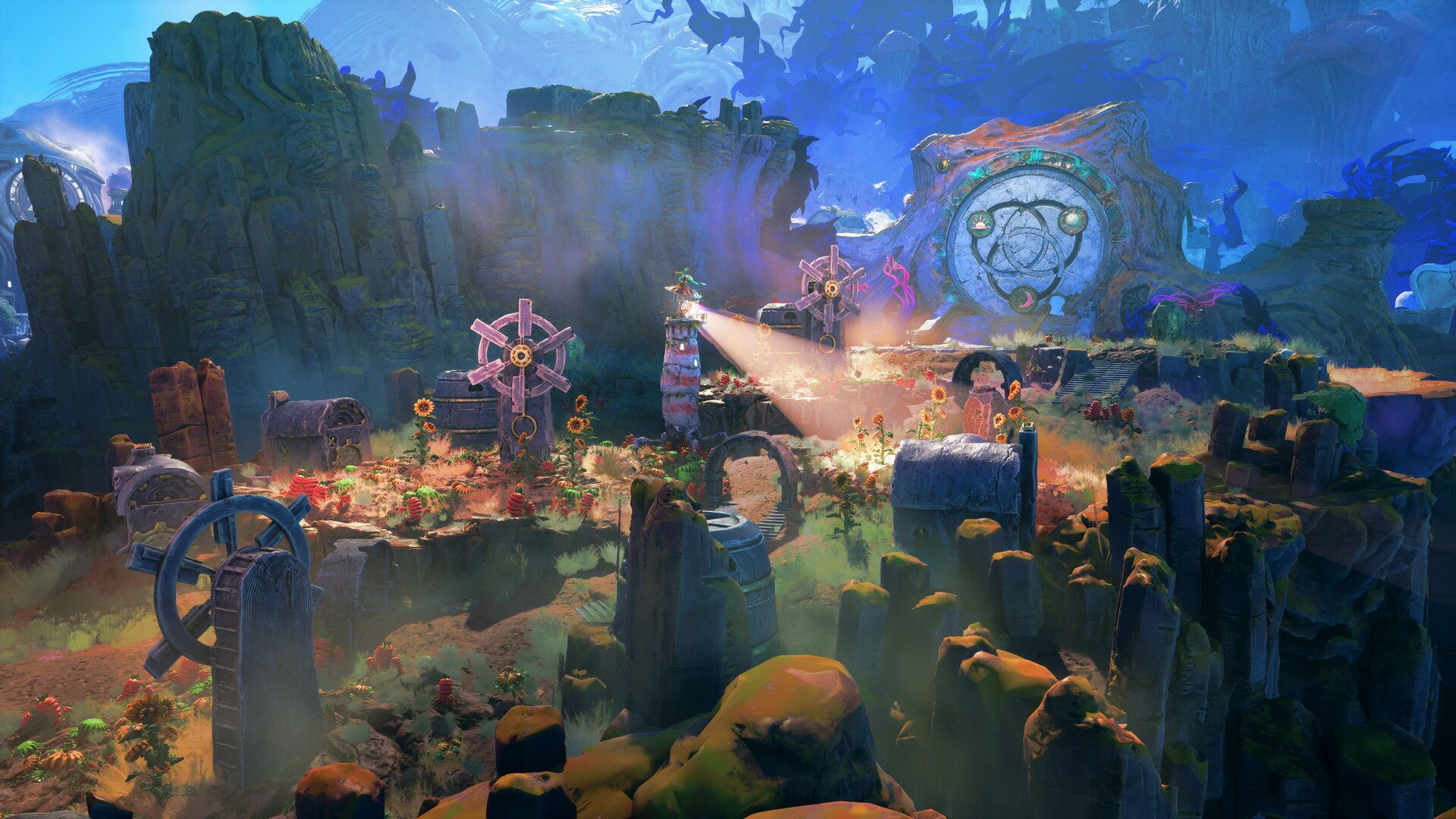
The cameras always show you where to go. They show you all the important elements. But they don’t rush you, so if you want to spend some time in a place, you can do that. Early prototypes didn’t have that sort of camera model, and it just felt like, ‘Well, the players aren’t seeing all the stuff we want them to see. And we don’t want them to have to painfully search for that. That kind of moves us away from being present in the world. So that one decision rippled down to a lot of different approaches throughout the whole game.
You touched on the idea of the sort of ‘chill’ vibe that you want to create. Part of what’s really appealing about this game is the idea that there isn’t any sort of combat. It’s easy to see how in another game there might be enemies that you’d have to stomp on as the lighthouse or command the bird to attack them, that sort of thing. So I’m curious, was there ever any sort of inclination to go that route or was it always imagined as this sort of experiential, not passive, but more ‘chill’ experience?
Petty: No, it was kind of always that way. I wanted this game to be very emotional, too. Nowadays, there’s a lot of media where people just state how they feel as opposed to you feeling how they feel, either through the power of acting or very clever writing or visuals. I wanted this game to have that emotional drama as well. And that meant stepping away from some of the gaming conventions; there’s no skill trees or grinding or meta rewards for collecting, per se. And there’s no combat. There’s no death in this game. There’s no fail state. That isn’t to say that there aren’t challenges and obstacles and puzzles that take some sleuthing and experimentation, but you can’t mess it up. And I think that was a thing we wanted to make clear to the player early on.
Because when you’re working on a game that has such an unusual look and setting and the characters can’t tell you exactly where to go, we wanted people to just go, ‘Okay, I’m on board for a little weirdness because I know I’m not going to mess this up.’ But it still really pulls you through because of the drama of the visuals and the sound. As strange as it sounds to say, you caring for the lighthouse and this bird and their friendship forming in this really strange place is very powerful. We’ve seen a lot of people react to that in a very emotional way, which I don’t think would be the same if it was a very goal-oriented or we were just interrupting that with a lot of combat or whatnot.
Keeper has a very surreal art style, with Salvador Dalí and Max Ernst having been thrown around as inspirations. What is it about that art style that speaks to you that you wanted to convey through a game experience for players?
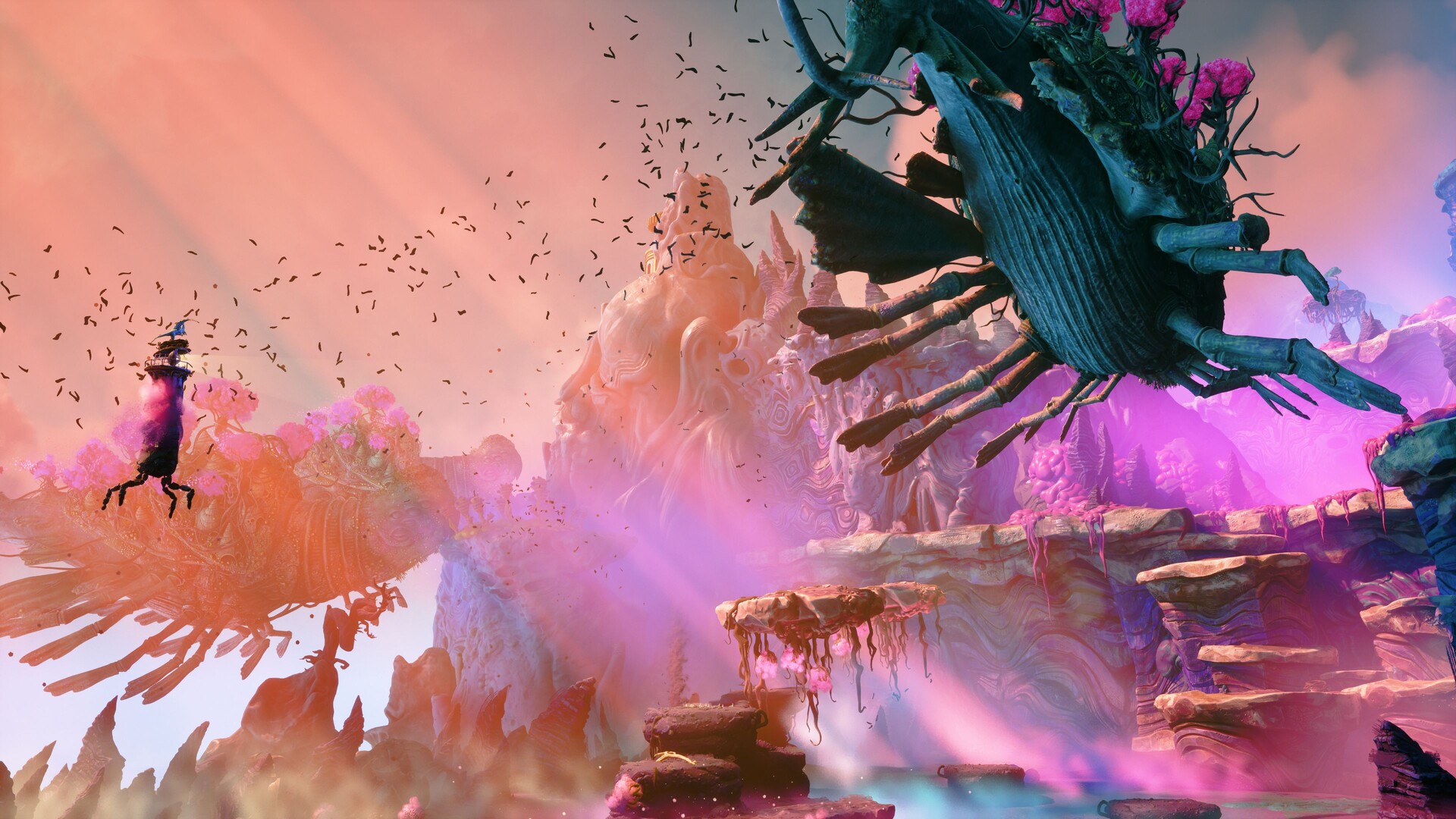
Petty: The first thing is just that there’s something about painting that suggests life even when it’s completely static. Not that we’re making a static game, but there is some sense of movement. There’s some sense of all the colours are subtly always becoming a different colour or transitioning. That’s definitely what I wanted: the idea that life is still around even without us. It’s not a dystopian post-apocalyptic game. It may be a life we don’t fully understand and you’re left to interpret it to some extent as a player. And surrealism is that way as well. The other big connection point there is ‘dreamlike.’ I think we were after this idea of a lucid, dreamlike experience where it’s trying to invite the player to get away from being just stuck in pure rationality and just, ‘Well, imagine this wonderful, weird tale that could happen.’
Maybe not scientifically — a rock probably won’t just ever grow legs and come alive. [laughs] But can we make you care about that? Could we suggest a really cool place to be in?
And surrealism did a lot of that. It just really embraced the dreamlike. I don’t think it’s absurdity for absurdity’s sake. In our game, there is a sort of, for lack of a better word, logic or rhythm or pattern to it all. And so I think as a player, when you go through the whole game and you see the world together, it should be hopefully surprising and unexpected, but at the same time feel cogent — feel like it’s part of something whole happening on this island.
You mentioned that sound and music is a big part of Keeper. How are you using the audio side of things to complement the artwork and enhance the storytelling while still keeping it dialogue-free and removing the goal posting and all of that?
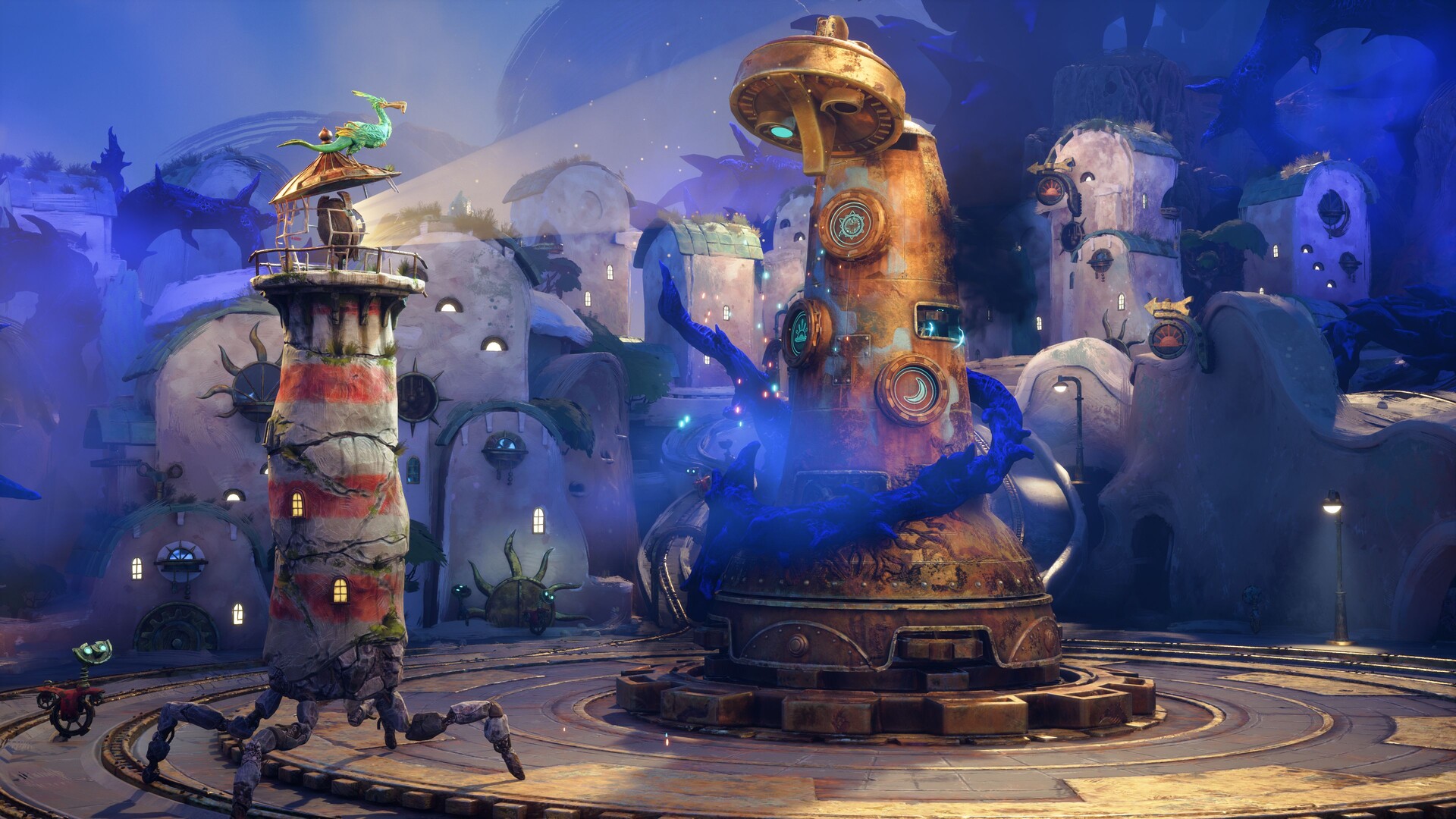
Petty: Audio and music especially is so much better at conveying emotion than any other media, in my opinion, that I really bring those folks in to the project really early on. A lot of the times on bigger games, they get brought in towards the end and I really want them as creative partners from day one. And that’s part of it — just making sure that they’re creating alongside you with the design, the levels, the art. We have a lot of visual change even within a level and the music follows suit to that as well. We’ll have moments of extreme drama — unexpected, almost surprising drama. And the music’s right there with that and the sound effects are with that. But then it opens up and washes away to a tranquil meadow just around the corner sometimes. And so obviously the music needs to carry that and enhance that.
The sound effects are really interesting because we also wanted to suggest a lot of things are alive on some level that wouldn’t normally be alive. And I think there’s a lot of subtlety in the sound design that suggests that. One kind of playful way we do that is that the player has access to an emote button. It’s there primarily for player expression, but if you use it, it causes Twig to make a variety of sounds and if there are other nearby creatures, they respond. So sometimes, that can help highlight important things. But a lot of times it’s just playful interaction.
But it’s interesting to see because there’s so much detail in those emote sounds that the audio team constructed and it’s purely optional for the player, in most cases, to interact with. In that case, you might see something that looks kind of like a crab, but then if you look closer, you’re like, ‘Oh well, instead of actually having claws or legs, it actually kind of has a wheel. Is that a sea anemone that’s there? And wait, is that a porthole for an eye?’ And then you emote with it, and I don’t know what you’d expect for a crab, but it makes this sound that is warmer than what you’d expect from a crab, or weirder in some cases. And so it kind of piques your interest. I think it suggests other possibilities about what’s inside or where did it come from, and I love that.
Something else I find really interesting… In some of the other Double Fine games, for instance, Psychonauts, you’re going into people’s heads, so the level design and everything is based on the theme of that character. Or in Brütal Legend, you draw from heavy metal music. But with something that’s rooted in surreal paintings, which is a much broader template to work with, how do you go about designing puzzles? Because that’s the main challenge point for the players. What even does a “surreal puzzle” look like that still makes sense within the world but is more abstract and thought-provoking?
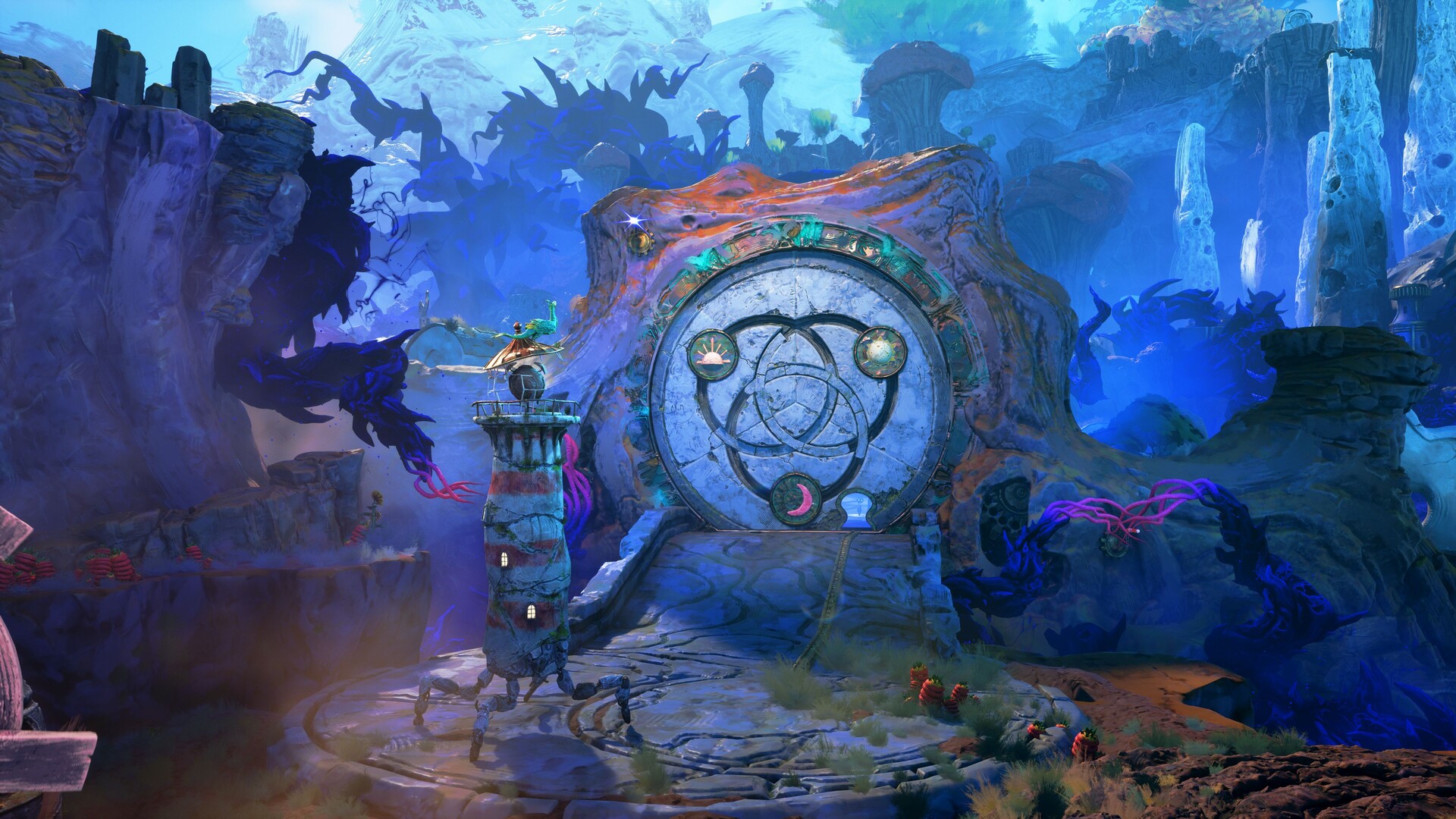
Petty: I think for us, we kind of fall on the sort of idea of nature and life as the background of that. So a lot of our puzzles are centred around finding other characters in the world. They’re all friendly; there’s almost never an aggressive or negative character in the game, per se. But many of them live in small groups, or some of them are alone. There’s even some towns in the game that you can come across. And so a lot of times, the puzzles centre around either helping or interacting with those creatures in some way. The puzzles are very integrated in the world because we’re not looking for a difficult puzzle that’s an abstraction overlaid onto the game, but rather, something that’s really integrated in the game.
Putting them around the characters, there’s two things… Around the characters is the repeating pattern, to some extent, but also your overall goal as a lighthouse is to get to that mountain peak. Throughout the game, especially early on, the mountain peak is communicating to you — almost like calling to you. And of course, it’s not using words, and you, as a player, are not entirely sure if that’s real in the context of the game or it’s just sort of psychedelic hallucination that’s going on. But the elevation gradually gets higher as you work your way up there. You’re encountering different sort of creatures and whether it’s obstacles to overcome to get higher towards that peak or it’s like, ‘Okay, I got to help this group of folks out and then they’re going to help me go forward myself,’ it’s one of those two that become the backbone of the puzzle structure and the level layouts.
Whether it’s Double Fine fans or people who’ve never played a Double Fine game and maybe just see it on Game Pass or anything like that, what are you most excited for players to experience?
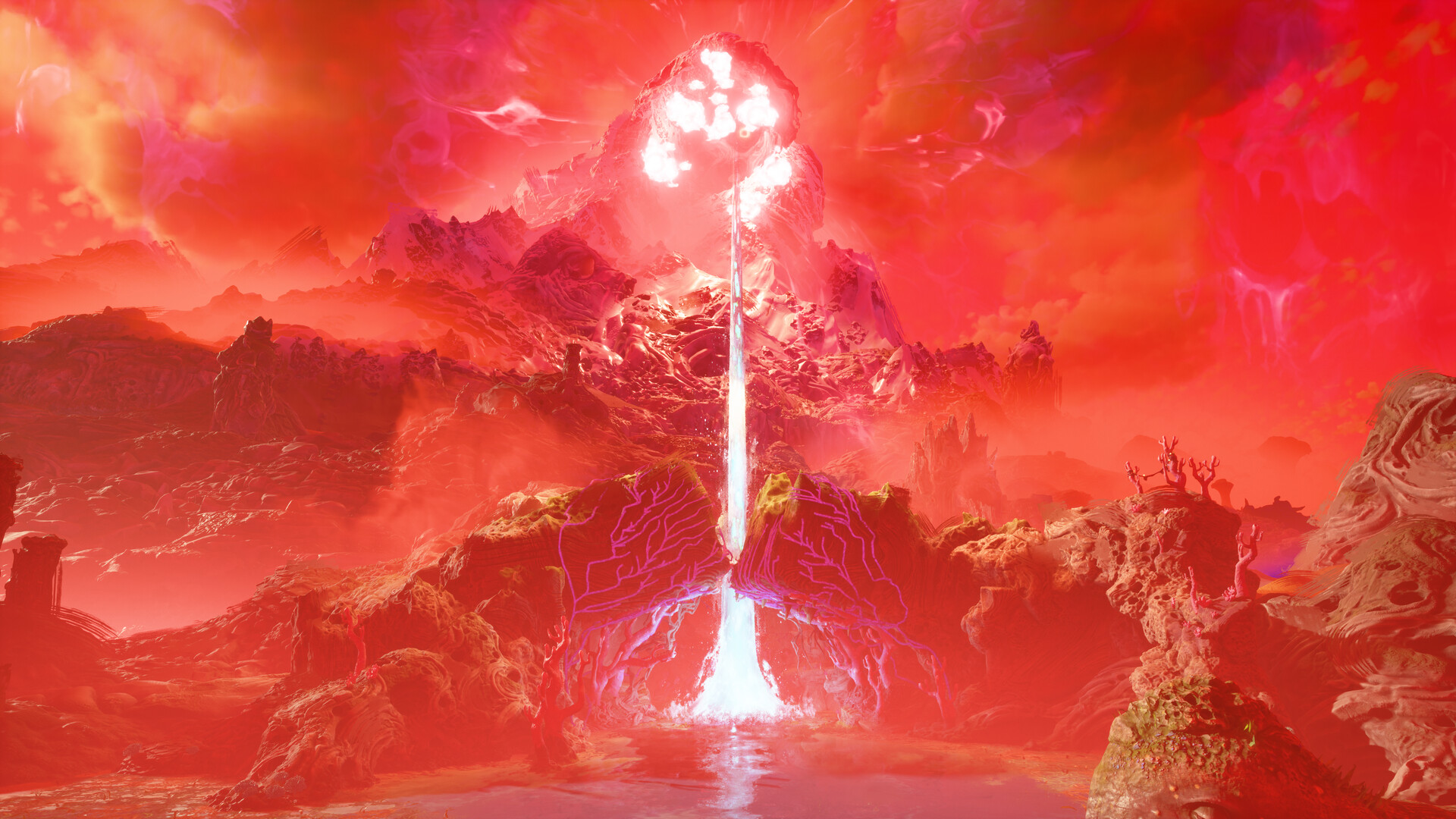
Petty: I really hope that people get on board with the sort of strangeness of the game, and I really want to see what people bring to themselves, because we’ve left some things open to interpretation. So I’m really curious to see what people think it’s about. And that’s valid. There’s not a hidden lexicon that only I know. That’s not how it works.
It works on multiple levels and in multiple ways. Me and the team, we’ve all been talking about, ‘Oh, I can’t wait to watch people play and see their reaction to this or what they think that’s about or how those two ideas connect.’ Or barring that, I just think there’s a lot of really surprising moments in the game and I’m really looking forward to people reacting to those as well.
This interview has been edited for length, language and clarity.
Keeper will launch on Xbox Series X/S, PC (Xbox PC and Steam) and Xbox Cloud on October 17. It will also be a day one Xbox Game Pass Ultimate release.
Image credit: Xbox
MobileSyrup may earn a commission from purchases made via our links, which helps fund the journalism we provide free on our website. These links do not influence our editorial content. Support us here.








